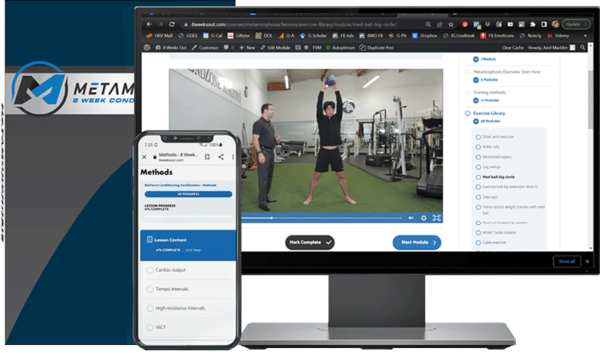When people start a new training program or diet, they typically make quick progress. Their strength goes up, the weight on the scale goes down. Everything feels like it’s working.
The problem is that sooner or later, results slow down. Eventually, they grind to a complete halt.
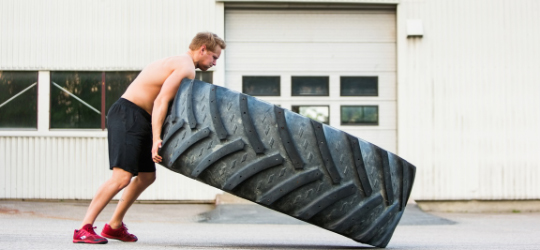
When this happens, people usually do one of three things.
-
- They double down and up the intensity, cut calories back even more, and keep going.
- They change to a completely different program or diet and hope it works better than the last one.
- They get frustrated, start missing workouts, see even worse results, and eventually just quit working out completely.
- None of these are recipes for achieving long-term results or goals. They’re a big part of the reason why most people ultimately fall short of looking, feeling, or performing at the level they want to.
The hardest part of fitness isn’t figuring out how to see results for a few weeks, or perhaps a month or two. It’s being able to see results week after week, month after month, year after year.
Introducing the Train, Recover, Repeat model
The single most important piece of training, and fitness in general, is finding the right balance between stress and recovery.
The reason the three approaches above most often fail is because they aren’t designed with that in mind.
You can only up the intensity, or jump from program to program, for so long before the limiting factor is not how hard you train, or what exercises you do, but how fast you can recover.
The train, recover, repeat, model of fitness is the answer to that problem because it’s built to work with your body, rather than fight against it.
It’s designed to help you balance the stress of training (and life) with recovery in a way that is sustainable and leads to long-term results.
The core principle of the model is to build your weekly training plan around three different types of workouts.
Red workouts (aka Development)
Red workouts are where you hit the highest intensities and volumes. If you’re doing conditioning, you’ll push yourself up into the red zone and burn the most calories.
On the strength side, these are the days where you’ll do your lower body and total body lifts that leave you tired and sore at the end. If you’re an athlete, these are your hardest practices and games.
By the time you’re done with a red workout, you know you’re going to be feeling it the rest of the day, and probably tomorrow too.
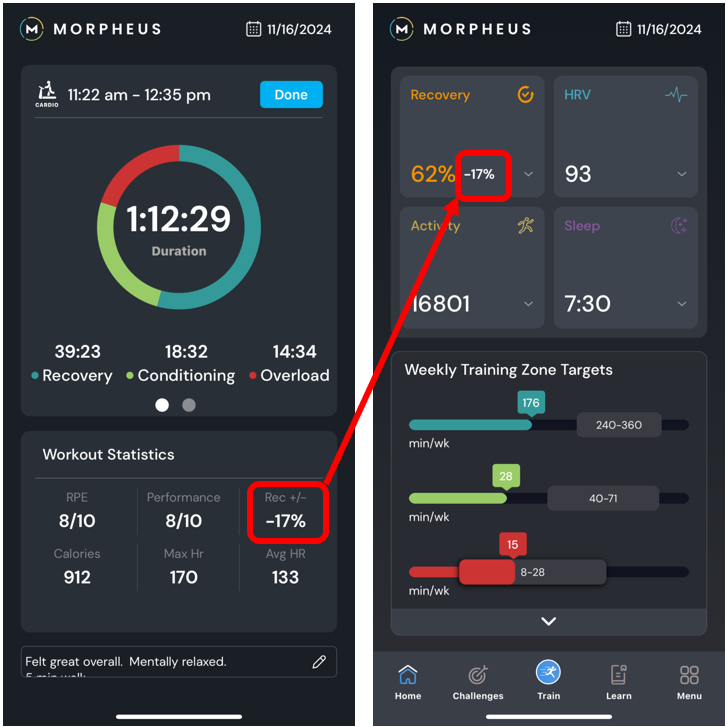
For these workouts your RPE is likely somewhere between 8 to 10 and you should see a decrease in your recovery score on Morpheus of 12-18%, or sometimes more, after a red workout.
Look at the Rec +/- in the visual above from the workout results screen. This also appears on the home screen of the app next to your recovery score. The +/- next to your recovery score is for the entire day, not just for a specific workout. So if you do more than 1 workout in a day, you’ll see the cumulative +/- there.
Note: The recovery score +/- adjustment from a workout can only take place when you have taken your recovery test earlier on the same day.
Green workouts (aka Stimulation)
A green workout is a step below red, but still a challenging workout. Here, you’ll get up into the green zone, or maybe even the red zone for a few minutes, but you won’t push yourself to your limit.
You’ll generally stay below 90% of your 1RM if you’re lifting and include more upper body and accessory type exercises. You should expect to feel tired by the end of the training session, but not exhausted.
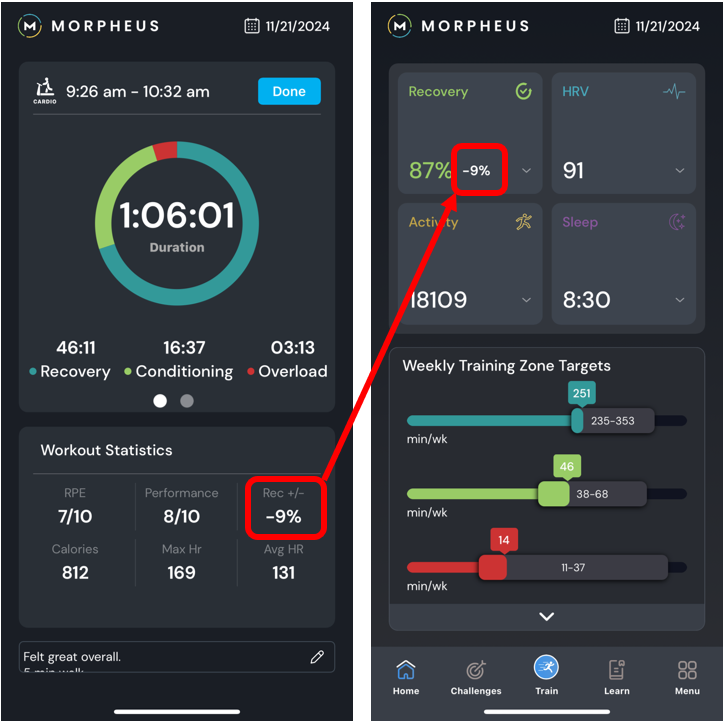
A green workout should have your RPE around 7 to 8 and generally leads to a decrease in recovery score of around 8-12%
Blue workouts (aka Rebound)
A blue workout is also referred to as a rebound workout. The benefits of this type of workout include:
-
- Helps shift the body into a “recovery state” where the body becomes more parasympathetic and HRV is driven up.
- Stimulates blood flow into every muscle fiber without providing too much additional stress that’ll slow recovery down rather than speed it up.
- Develops the metabolic systems that drive recovery — so that someone’s overall ability to tolerate and handle the stress of life improves.
- Improves breathing and movement quality in a way that can reduce joint stress and help avoid unnecessary increases in stress hormones.
- Doesn’t take too much time. Working on recovery shouldn’t be boring or take as long as a normal workout. I designed the workouts to be no more than 30-45 minutes.
- Makes you feel better. After a Rebound Training session, you should leave the gym feeling better than when you walked in.
The key is to just follow three basic principles:
-
- Keep the workout short. No more than 45 minutes. I’ve found that 25-35 total minutes from start to finish tends to be the sweet spot for most people.
- Stay in the blue zone. The blue zone in Morpheus is called the recovery zone for a reason. This is the right level of intensity to promote recovery, so you’ll want the majority of the workout to be in the blue. You’ll also need to keep your average heart rate over 100bpm. Going for a walk can be good for staying active and will increase your step count, but a recovery workout is about more than just taking steps.
- Use a variety of movements. In order to drive blood flow into as many muscle groups as possible, it’s beneficial to include a variety of movement patterns. If you have an area that’s particularly sore from a previous workout, spend extra time doing exercises using those muscles to drive blood flow into them and promote recovery.
If you follow the guidelines above, you should see your recovery score increase 3-5% on average. This lets you know that you’ve spent the right amount of time at the right intensity to speed up recovery.
If you see a smaller increase, or none at all, it means you probably went too hard and/or trained for too long.
Remember, everything comes down to energy. If you end up burning too many calories or adding too much stress, it defeats the purpose of doing a recovery workout.
When it comes to recovery, less is often more.
https://8weeksout.com/rebound-training-template/
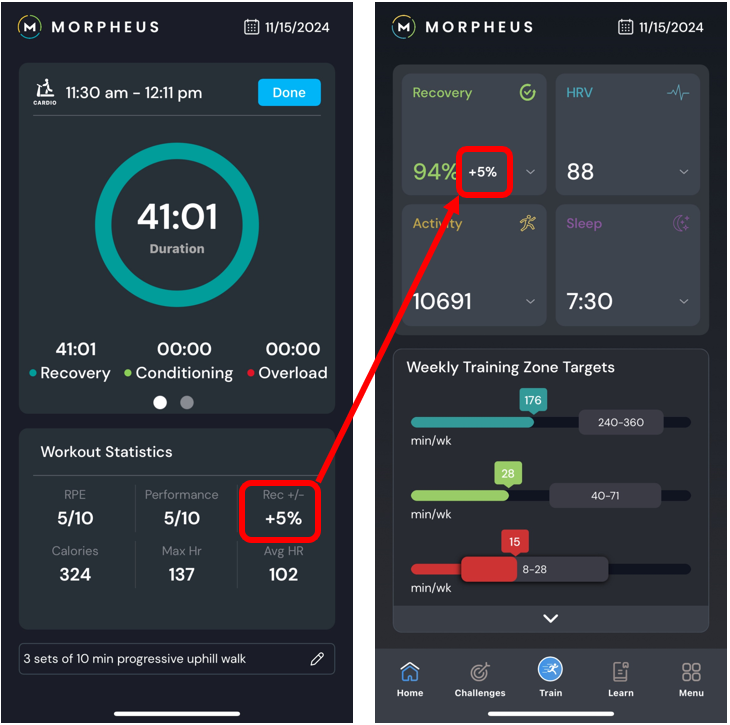
Building your weekly training plan
Using the framework provided by the three types of workouts above, there are endless ways to build your training week.
The single most important principle in the Train, Recover, Repeat model is to alternate periods of loading stress on your body through training, with periods where you allow it to fully recover.
A single period of loading and recovery is called a stress-recovery cycle.
Each week, your goal should be to use 1-2 of these cycles to push your body to increase its fitness, and then give it the time to do exactly that through recovery.
This is how you balance both sides of the equation and create a sustainable way to make consistent progress towards your goals.
Two of the easiest and most effective ways you can build your training week around this concept is the 1/2/3 and 2/2/2.
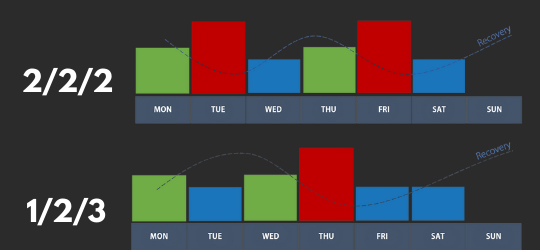
Both have up to 6 total days of training per week, but they vary in how they’re organized and the patterns of the stress-recovery cycle.
The 1/2/3 weekly model
The 1/2/3 weekly model is a great option for people that are just training to look and feel their best, while staying healthy.
A single red day on Thursday, followed by either blue days, or even days off, over the weekend, makes it extremely flexible for people with busy schedules and stressful daily lives.
The 2/2/2 weekly model
For people with higher levels of fitness that generally have things like nutrition, sleep, and lifestyle stress managed well, the 2/2/2 weekly model is a highly effective approach.
It allows for two red days spread throughout the week, while still allowing enough time for full recovery before the start of each week.
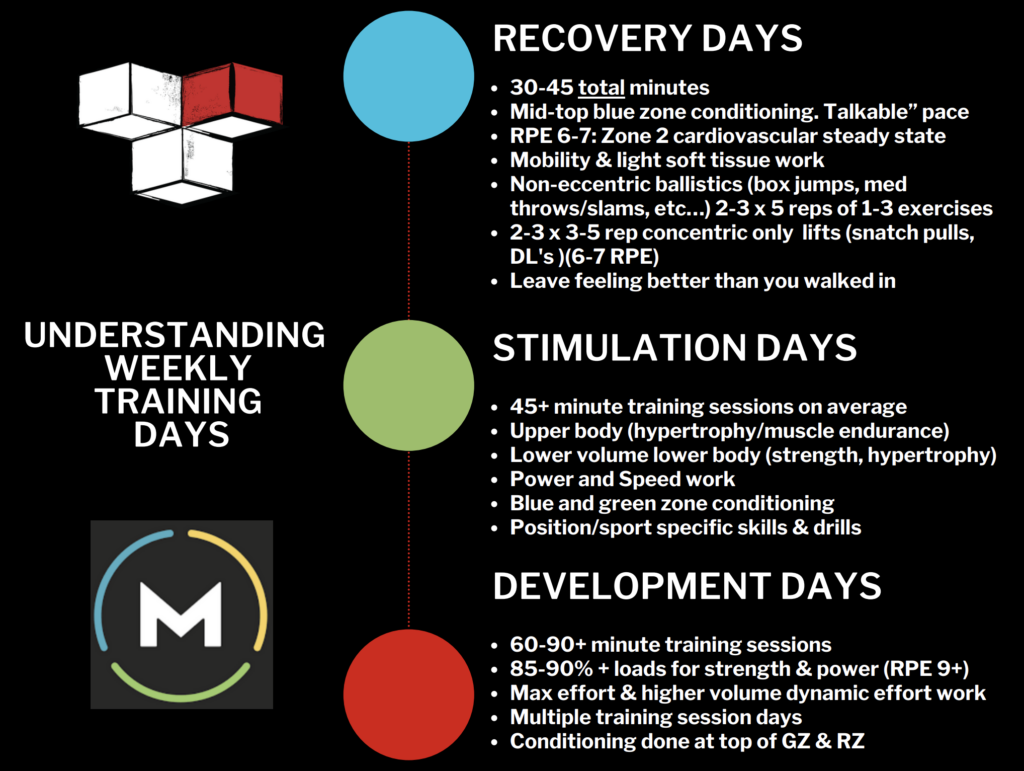
Here is what a week of 1/2/3 daily recovery score adjustments may look like. This is not what it has to be; this is just an example:
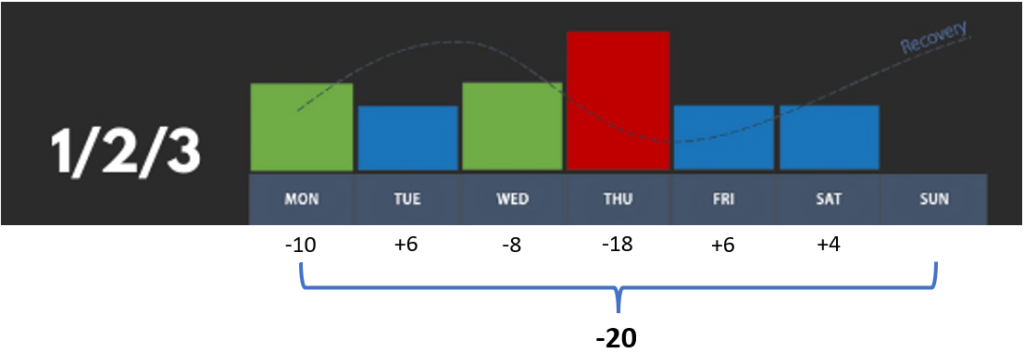
Here is what a week of 2/2/2 daily recovery score adjustments may look like. This is not what it has to be; this is just an example:
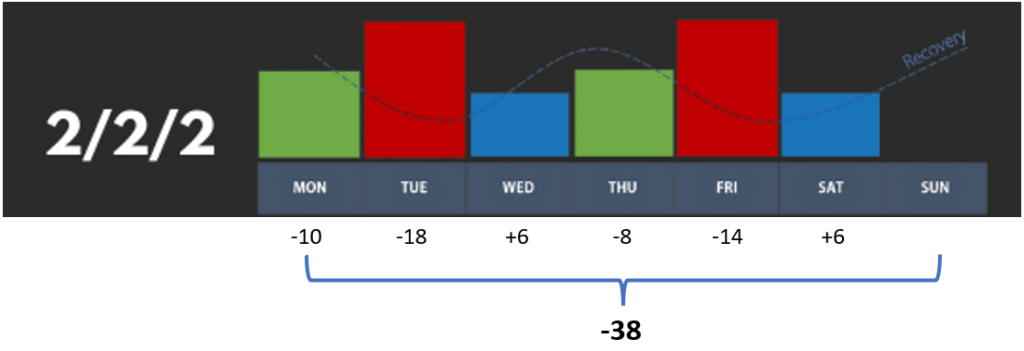
Notice how 2/2/2 is almost twice as stressful as 1/2/3 due to the one more red day and one less blue day.
General guidelines
Exactly what you do for each workout in terms of exercises and training methods is completely up to you and depends on your fitness level, goals, and available equipment.
Regardless of your exact program, the following guidelines can also help make sure you’ve got your weekly program dialed in:
-
- Your average daily recovery score in Morpheus should help you decide how many red days you can do in a week and still recover. Your goal should be to keep your average above 80%.If you can follow the 2/2/2 model and keep your average recovery score above 80%, then you’re on the right track. If you can’t, then the 1/2/3 or another variation with less overall intensity will be a better fit for you.
-
- It’s generally best to avoid more than 2 red days in a row as much as possible. This leads to a high level of fatigue that requires at least 2 days of recovery to prevent the potential for increased injury and burnout.
- The goal should be to start each new training week without any residual fatigue from the previous week. This prevents the accumulation of chronic fatigue that puts the body into a state of overtraining/under recovery.A good way to know you’ve done this is if you wake up Monday morning with a recovery score above 85%.
How to get a complete conditioning program
If you want a complete, 8-week conditioning program built around Morpheus, the train, recover, repeat model and zone-based interval training, the Metamorphosis conditioning program is a perfect program for you!

